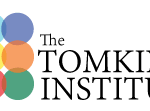Early years
Silvan Solomon Tomkins was born 4 June 1911 in Philadelphia and died 10 June 1991 at the nearby New Jersey shore he loved so deeply. He’d entered the University of Pennsylvania with the intent to become a playwright, earned an MA in psychology, and left in 1934 with a doctorate in philosophy. The topics of his dissertation, logic and value theory, remained central throughout his career. Unable to find scholarly employment during this period of the Great Depression, Tomkins spent the next two years in New York City gainfully employed as a handicapper for a racing syndicate, success he attributed both to his remarkable ability to “read the faces” of race horses and the willingness to assemble and study detailed records on horses, jockeys, and the tracks they raced.
At Harvard
In 1936 he began postdoctoral study in philosophy at Harvard University, where he became fascinated by the pioneering work on personality emerging from the Harvard Psychological Clinic under the leadership of Henry A. Murray and Robert W. White. The red thread connecting all of these seemingly disparate scholarly interests was a core interest in the question, “What do human beings really want?”
The Tomkins-Horn Picture Arrangement Test (PAT) was devised in the early 1940s, and despite its avowed purpose to study worker absenteeism, it served to alert Tomkins and many others to the importance of emotion as a motivating force. His 1946 book on Murray’s Thematic Apperception Test (TAT) remains a classic approach to the study of personality.
At Princeton, Publishing Affect Imagery Consciousness
In 1947 he began an eighteen-year tenure in Princeton University’s Department of Psychology, where his interest in the relation between emotion (which he came to call “affect”) and personality formation became the defining theme of his career. Enthralled by Norbert Weiner’s early work on cybernetics, Tomkins saw immediately that what we know as the adult human was the result of several interdependent systems working together through developmental sequences that had until then been poorly studied. By luck, his son Mark was born during the year of his sabbatical leave, offering an unparalleled opportunity to watch how the affects developed in a “subject” he could not but find fascinating.
With the 1962 and 1963 release of the first two volumes of his masterpiece, Affect Imagery Consciousness (AIC), Tomkins broke with mainstream psychology to declare the primacy of the affect system as the motivating force in human life. He did this in an era dominated by Freudian drive theory, and maintained his position in the face of the increasing popularity within academic psychology of cognition and behavior. Interest in the formation of the adult personality became unpopular at Princeton, and he withdrew into the study of the affective nature of ideology, of commitment, and of the addictions.
Other Major Accomplishments
The first scientist to receive a Career Scientist Award from the National Institute of Mental Health (NIMH), in 1965 he established the Center for Cognition and Affect at the City University of New York. Three years later he moved to Livingston College of Rutgers University, where he remained until his formal retirement in 1975. The final two volumes of AIC were completed just before his death in 1991, and expanded his earlier work on personality formation in the language of Script Theory.
In addition to the Career Scientist Award from the NIMH, Tomkins received the Bruno Klopfer Distinguished Contribution Award of the Society for Personality Assessment, the Distinguished Contribution Award from Division 12 of the American Psychological Association (APA), and the Henry A. Murray Award of APA’s Division 8. His work on innate affect (the neural programs postulated to govern the physiological basis of the nine families of emotion he described throughout his work) and the psychology of script formation (the way each of us learns to manage our emotional, intellectual, and interpersonal life) has become of increasing importance throughout science and art. Understandable to any who knew him well, Tomkins counted among his favorite post-retirement honors the day when the local track named a race “The Professor” and allowed him to present a trophy to the winning owner and jockey. Wherever he lectured, worked with research teams, or chatted with colleagues, it became clear to all that they were in the presence of genius.
“Memories of my Father” by his son, Mark
He never told his racing compatriots at the track that his nickname “The Professor” had anything to do with his academic work. They all simply believed it was because he arrived daily with a full size suitcase filled with past performance charts, meticulously cut from the Daily Racing Form and mounted on legal sized paper, and because he had such a highly systematic approach to handicapping. Word traveled to people such as Walter Matthau who told a mutual friend that he wanted to meet the Professor. They spent an afternoon together enjoying the races while Matthau waited patiently for him to make his picks. I am not sure how they made out that day.
His study of faces took some unusual turns. In the 1960’s, he contacted the producer of the TV show “To Tell the Truth”—a show where a celebrity panel of four attempted to identify a described contestant who typically had an unusual occupation or experience. Each contestant was joined by two imposters who would lie when asked questions, while the real contestant had to tell the truth. Tomkins told the producer he needed better imposters. The man invited him to a taping of the show doubting his ability to read faces and was astounded when Tomkins had no trouble whatsoever determining who the real person was in each and every case. He also did extensive studies of the faces of the FBI’s ten most wanted fugitives. He consulted with the bureau in the 1960’s advising them about his findings. My room as a kid was covered with these posters which he would give to me once he was finished with them.
He had a photographic memory. For instance, even near the end of his life, when I was helping him with AIC Volumes III and IV, he would instruct me to go to his living room (most of the walls in his two story house were lined with books) and look for the fourth book from the right on the third shelf from the floor on page 82 for a quote he needed. During my experience assisting him, he never missed finding information this way.
Timeline
| 1911 | Born, June 4 |
| 1927-30 | Playwriting, UPenn, BA |
| 1930-31 | Psychology, UPenn, MA |
| 1931-34 | Philosophy, UPenn, PhD |
| 1934-35 | Handicapper for a horse racing syndicate |
| 1935-37 | Post Doc, Philosophy, Harvard |
| 1937-40 | Post Doc , Psychology, Harvard |
| 1940-43 | Research Assistant, Psychology, Harvard Psychology Clinic |
| 1943-46 | Instructor, Social Relations, Harvard |
| 1946-47 | Lecturer, Social Relations, Harvard |
| 1947-55 | Associate Professor, Psychology, Princeton. Director of Clinical Training Program. |
| 1955-65 | Professor, Psychology, Princeton. Director of Clinical Training Program. |
| 1960-61 | Fellow, Center for Advanced Study in the Behavioral Sciences, Stanford |
| 1965 | Career Scientist Award, National Institute of Mental Health |
| 1965-68 | Research Professor, Director Center for Resarch in Cognition and Affect, City University of New York |
| 1968-75 | Research Professor, Rutgers |
| 1975 | Professor Emeritus, Rutgers |
| 1980-91 | Adjunct Professor, Social Science Program, UPenn |
| 1991 | Died on June 10 |


